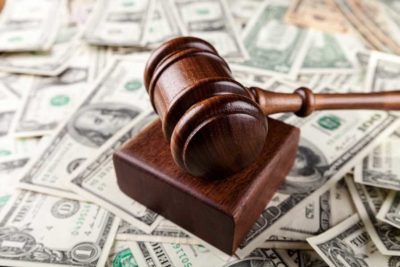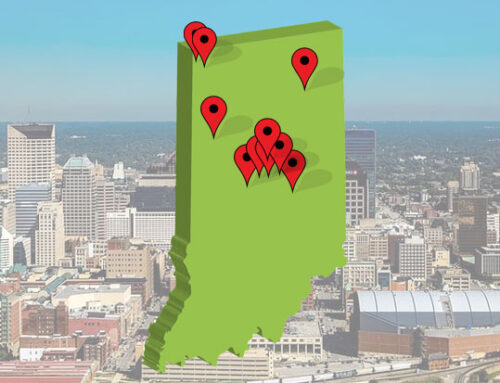We are taking some time to help demystify the process of hiring a personal injury lawyer and pursuing a lawsuit. We started with a discussion of how to find a lawyer and what to expect during the initial meeting. Now, we move on to expectations. In particular, expectations of damages. We have all heard about that one case. You know the one. The fast-food restaurant, the hot coffee, the millions and millions of dollars. Many in the media hyped the McDonald’s “Hot Coffee” case as an example of personal injury verdicts run amok. Indeed, as a society, we seem to think that sustaining the slightest of injuries is tantamount to a winning lottery ticket. This belief is buoyed by frequent headlines detailing jury verdicts in the millions for personal injury cases. The reality is the McDonald’s hot coffee case didn’t happen the way the media portrayed it (for a closer look click the link above) and verdicts that size is the exception rather than the rule.
To understand the disparity between what is often reported and talked about and what actually goes on every day in the civil justice system, one important fact must be kept in mind: hundreds of thousands of personal injury cases are filed every month. In 2005, the Bureau of Justice Statistics found that more than 7 million civil cases were filed in state courts across the country, and about 60% of those were tort claims. Meanwhile, only a small handful of these cases make headlines. In fact, a quick Google search for the broad term “jury verdict” from news outlets over the past year returns a mere 68,400 results.
Even if all of these results dealt with personal injury, all of them actually dealt with trial awards and were all unique, that would only equate to about 2% of all personal injury cases filed in a given year.
The reality is that what we see in headlines is, generally speaking, not what we see in in the civil justice system day-to-day. According to that same BJS study from 2005, only about 4% of all plaintiffs recovered more than $1,000,000. In fact, the median jury award was a mere $28,000. And that’s for the approximately 3% of personal injury cases that actually go to trial.
So, the question becomes: why so low? To answer that question, we need to examine the purpose of damages in a lawsuit. There are two kinds of damages: compensatory and punitive. Punitive damages are exactly what the sound like damages meant to punish a wrongdoer. Unfortunately, they are only permitted in the most egregious of cases, and as a result, are rarely awarded. That same BJS study found that they were awarded in less than 5% of all personal injury cases in 2005. For the vast majority of plaintiffs—especially those plaintiffs injured in auto accidents—the only damages to be sought are compensatory.
Compensatory damages exist to compensate the plaintiff for their injuries. The goal is to award the plaintiff just enough money to put them back in the position they would have been had they never been injured in the first place. Compensatory damages do not exist to make a plaintiff rich.
Compensatory damages are divided into two categories: special damages and general damages. Special damages are those damages awarded to cover things like medical bills, lost wages, property damage, and other tangible, easily quantifiable things. Often, a plaintiff will be able to recover not only for past medical expenses but also future medical expenses. For example, an individual injured in a car accident who will require multiple on-going surgeries over the course of the next several years will not only be able to recover for the cost of treatment that has already been incurred but also the cost of those future surgeries.
General damages are those damages which exist to compensate an individual for their pain and suffering, emotional trauma, and other, not-so-easily-quantifiable things. The real value of special damages can vary wildly depending on the specific facts and circumstances of a given case. Factors considered often include physical limitations, the duration of pain, prognosis for recovery in the future, impact on familial and other personal relationships, and the extent to which medical treatment disrupts a plaintiff’s life
Another factor weighing against the would-be plaintiff millionaire is attorney fees. As we discussed earlier, most attorneys will take anywhere around 33% or more of the plaintiff’s damages.
Finally, if your case goes all the way to trial (which is very unlikely—the vast majority settle well before trial), it is important to recognize that the jury will discount your damage award based on the extent to which you contributed to your own injury. This is the doctrine of comparative fault, discussed in an earlier post.
The result of this restriction on punitive damages, the narrowly defined role of compensatory damages, attorney fees, and a potentially fault-reduced jury award is a system that produces a median jury award of $28,000 for personal injury cases.
So how do we wind up with millions of dollars awarded to a woman who spilled coffee on herself? We don’t. For starters, the case is more complicated than McDonald’s PR team would have you believe. McDonald’s was selling coffee at a temperature that was unsafe for any form of human consumption—they served their coffee anywhere between 180 and 190 degrees, a full 40-50 degrees hotter than coffee that is fit for drinking. The coffee was so hot it left both of the plaintiff’s inner thighs covered in third-degree burns. Despite that, the jury only awarded the plaintiff $160,000 in compensatory damages. The millions came in the form of punitive damages. McDonald’s had received more than 700 reports of burns from their coffee. McDonald’s knew the coffee was far too hot for human consumption. And, McDonald’s knew that the coffee was bought to be consumed immediately. The jury viewed this conduct as particularly wanton and found that McDonald’s should be punished. Still, the punitive damage award was ultimately reduced to a mere $480,000. The result is a sub-million-dollar award to a woman who suffered extreme injury as a result of a company that knew it was selling an unsafe, injurious product and had been for more than a decade.
The key takeaway is this: do not approach a personal injury suit with the expectation of getting rich. Seek out and hire an attorney on the expectation that you will be fairly compensated for your injuries and your life post-injury. That way, your expectations will not be too high, and you will be able to work far more productively with your attorney.





